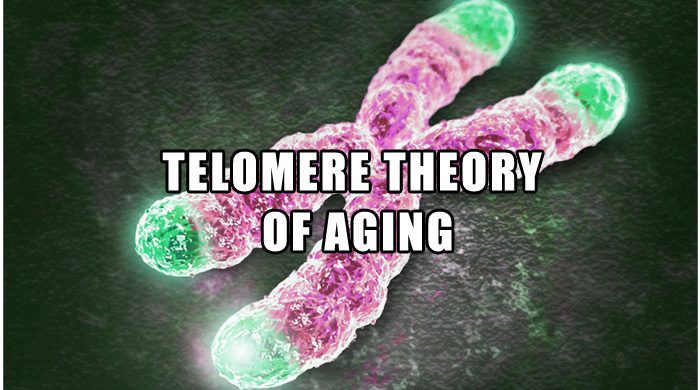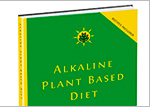Telomere Theory Of Aging

The telomere theory of aging is based on the observation that telomeres of body cells generally shorten after each cell division. When telomeres reach a certain length cells can no longer divide and cells age and die, or turn into cancer cells.
The discovery was important because it revealed that to slow aging efforts should be put into stopping or slowing the shortening of telomeres, or even lengthening telomeres to extend the life of cells.
Science has identified two things that can help the cause, the telomerase enzyme and the role oxidative stress plays in telomere shortening and aging.
Telomere Shortening & Aging
Telomeres are sections of repeating sequences of DNA that cap the end of chromosomes. Though telomeres are DNA they dunk contain genetic information and can be thought of as junk DNA.
Their purpose is to protect the DNA of the chromosomes that do contain genetic information. Telomeres do this by capping of the ends of chromosomes so they don’t fray and bind to other chromosomes.
In this way telomeres are thought of as the plastic tips on the end of shoelaces that stop the ends of shoelaces from fraying. Each time the somatic cells, cells of the body divide enzymes are able to completely copy the DNA that contains the cell’s genetic information.
The process is not able to totally replicate the telomeres and pieces of the tips of the telomeres are lost during each cell division. Once the telomeres reach a certain length the cell can no longer divide and the understanding of this process lead to the development of the telomere theory of aging.
At the point the cells can no longer divide the cells then begin to age, eventually die, or are transformed into cancer cells. To slow, stop, or reverse aging, the telomere shortening has to be addressed.
Telomerase, Telomere, and Aging
The telomerase enzyme is the answer to extending the life of cells. The telomerase enzyme is a ribonucleoprotein, it contains protein and RNA, and it is able to copy back lost sections of the telomere and extend the telomere.
The issue is the telomerase enzyme is primarily active in germ cells (eggs and sperm), activated lymphocytes, and certain types of stem cells, and not in somatic cells (cells of the body).
Luckily for us studies show that we can increase telomerase activity and this activity does lengthen the telomeres of somatic cells. Dean Ornish has shown in studies[1,2] that consuming a plant-based diet, exercise, and stress management, and the removal of the consumption of saturated fat from animals increases telomerase activity.
The consumption of animal fat greatly increases oxidative stress and oxidative stress has been implicated in reducing telomerase activity and the quickening of the shortening of telomeres.
On the other had a plant-based diet is loaded with antioxidants which protect against oxidative stress and it promotes an environment that increases telomerase activity.
To slow aging within the telomere theory of aging we would slow the shortening of telomeres and increase telomere length by avoiding the consumption of animal fat, consuming a plant-based diet, exercising, and by reducing stress.
[1] Effect of comprehensive lifestyle changes on telomerase activity and telomere length in men with biopsy-proven low-risk prostate cancer: 5-year follow-up of a descriptive pilot study
[2] Reconstitution of telomerase activity in normal human cells leads to elongation of telomeres and extended replicative life span
[3] Oxidative Damage






